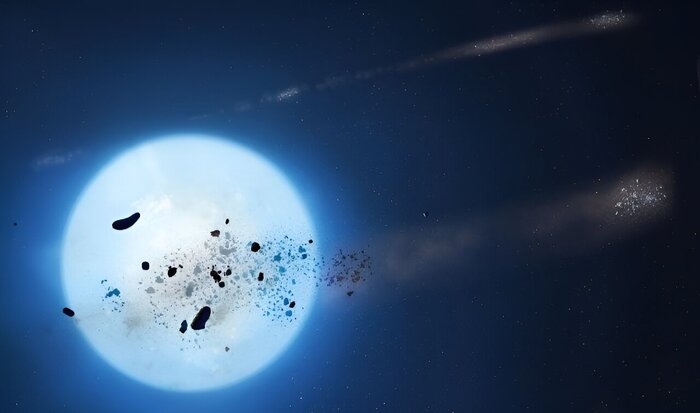Shooting stars over North Rhine-Westphalia (archive): Best view in the evening hours
Photo: Oliver Berg / dpaEvery summer dozens of shooting stars shoot across the night sky. This year, the peak of the showers is imminent. In the night from Tuesday to Wednesday, the Perseids' shooting stars will reach its maximum - visible to sky-gazers and amateur astronomers.
The Association of Star Friends in Germany assumes that up to 100 glowing meteors can be seen in the sky every hour. The German Aerospace Center expects slightly fewer falling stars - around 60 per hour, i.e. one every minute on average.
With 60 kilometers per second, that's 216,000 kilometers per hour, the Perseids are very fast. Bright objects, so-called bolides or fireballs, are not uncommon.
When is the best time to see the shooting stars?
According to experts, visibility is particularly good on Tuesday in the late evening hours. Around midnight the moon rises so that weaker falling stars can no longer be seen. If you want something, you have to look east or northeast in the evening.
Perseids over Spain (archive). Long exposure shot
Photo: Alvaro Barrientos / APThere is a clear view of the spectacle in the north-east of Germany: According to the German Weather Service, it is clear with stars. In the south, however, thunderstorms can form during the day in Bavaria, Baden-Württemberg, Rhineland-Palatinate and parts of North Rhine-Westphalia on Tuesday. This harbors the risk that residual clouds and hazy air will block the view later. Nevertheless, there are opportunities everywhere because it is not possible to say exactly where the thunderstorms originate.
Are technical aids useful?
Sky-gazers don't need special equipment to observe the Perseids - a deck chair or sleeping mat and good all-round visibility are sufficient. The best opportunity for observation is a place far away from cities flooded with artificial light.
"Binoculars or telescopes are of little use when observing, as both restrict the field of vision," explained Manfred Gaida, astrophysicist in the space management of the German Aerospace Center. The search with the naked eye is more successful. Photographers are helped by a stable and windproof camera with a good imaging wide-angle lens or a so-called fisheye lens.
How are the Perseids formed?
The shooting stars seem to spring from the constellation Perseus. The real cause, however, lies elsewhere: on its orbit around the sun, the earth flies through a cloud of small cometary debris left behind by comet 109P / Swift-Tuttle, write the astronomers. At a height of 80 to 100 kilometers, the small dust particles create the phenomena of light called shooting stars.
Comet 109P / Swift-Tuttle was discovered in 1862 by Lewis Swift and Horace Tuttle independently. It takes around 133 years to travel around the sun. According to astronomers' calculations, the next time it will be visible from Earth in 2126.
What else is there currently in the sky?
In addition to the Perseids, the starry sky currently also has a true parade of planets to offer, according to the Association of Star Friends and the House of Astronomy: the strikingly bright Jupiter can be seen well for almost the entire night and moves together with the somewhat weaker Saturn from the southeast to the southwest .
Shortly after midnight, the red planet Mars joins it in the east. Venus stands early as a bright morning star in the east and before sunrise in the first half of August, the nimble Mercury can also be seen directly above the eastern horizon.
Icon: The mirrorjme / dpa







